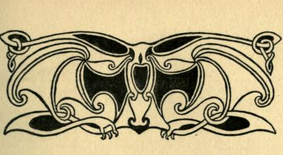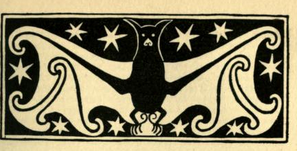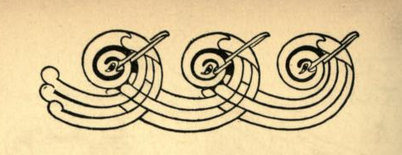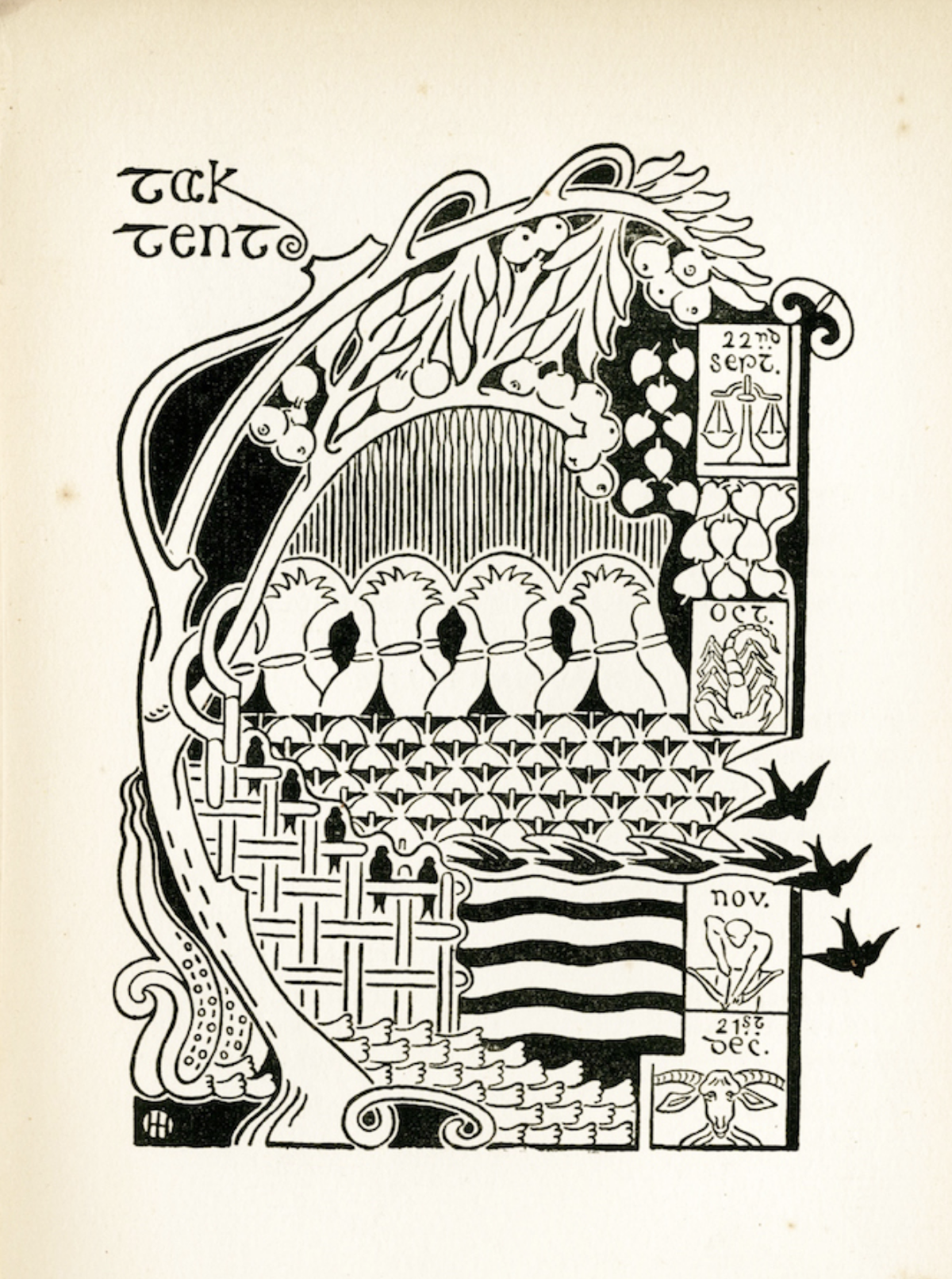CRITICAL INTRODUCTION
THE EVERGREEN: A NORTHERN SEASONAL
VOLUME 2: AUTUMN 1895


Patrick Geddes and Colleagues published the second volume of The Evergreen: A Northern Seasonal from the Lawnmarket of Edinburgh, with T. Fisher Unwin bringing out this Autumn issue in London, and J.B. Lippincott in the United States. The extension to the North American market speaks to the issue’s stated desire to “appeal . . . to Magna Scotia beyond Tweed and over sea,” and to “share in that wider culture-movement which knows neither nationality nor race” (Branford and Geddes 8). In addition to the “Celtic Renascence” and “the revival and development of the old Continental sympathies of Scotland,” the Prefatory Note sounds “a rallying cry” for a “Return to Nature.” As always, for Geddes, nature’s seasonal cycle has both personal and political meaning, forming the basis for an integrated individual, social, and civic life. The Autumn number of The Evergreen “makes no promise of perpetual life, but seeks only to link the Autumn of our own age with an approaching Spring, and pass, through Decadence, towards Renascence” (Branford and Geddes 8). As the ensuing contents make clear, the educational, architectural, and decorative activities of Geddes’s group aim “to realize somewhat of the ‘Cité du Bon Accord’” in Edinburgh Old Town (Branford and Geddes 8).
The “Cité du Bon Accord”—that is, the ideal city of harmony and agreement—was the title that the French anarchist geographer, Élisée Reclus, gave to a fable he contributed to the Autumn in the North section of the Evergreen’s second number. The editors’ decision to place the work here emphasized the magazine’s continental connections, while also commemorating Reclus’s participation in the Summer Meetings that Geddes ran every August. Initiated in 1887, the Summer Meetings were innovative, interdisciplinary, and experiential courses held in Edinburgh for men and women from any class or nation who wished to participate in an immersive learning experience. The Evergreen circle was very much involved in the Summer Meetings. Art classes were offered by John Duncan, Charles Mackie, and W. G. Burn-Murdoch, while lectures on literature and science were given by Evergreen contributors William Sharp and Andrew Herbertson, among others (Reynolds 90). In addition to Reclus, other notable international participants included the Russian anarchist Peter Kropotkin and the American psychologist William James (Ferguson, “Patrick Geddes” 58).
If the educational vision of the local Summer Meetings was disseminated internationally in The Evergreen’s four numbers, so too was its manifestation of a growing Franco-Scottish alliance. In 1892, Geddes became a founding member of the Franco-Scottish Society, which continues today (Reynolds 101). Consequently, as Siân Reynolds observes, The Evergreen “was remarkable, not only for its eclectic content and its design, but also for the degree to which it represented a Franco-Scottish collaboration” (98). The Spring number had included artwork by French Nabi painter Paul Sérusier and an essay in French on modern literature by Charles Saroléa. The Autumn number followed with two works entirely in French—Reclus’s “La Cité du Bon Accord” and Abbé Félix Klein’s critical essay on new French literature, “Le Dilletantisme”—as well as Sharp’s translation of a French play by the Belgian writer Charles Van Lerberghe, “The Night-Comers” (Les Flaireurs). In keeping with the themes of seedtime and harvest, Branford and Geddes asserted in the “Prefatory Note” that the first two volumes of The Evergreen “give evidence that this [Franco-Scottish] association is still a living and a fruitful one” (8).
The literary contents of the Autumn number were more balanced between fiction and non-fiction than had been the case in the Spring volume. However, the four fictional pieces were not in the modern short story genre promoted by The Yellow Book. Three were adaptations of traditional folktales, and one was a personal reflection. Sir George Douglas’s “Cobweb Hall” relays a Berwickshire story about a butler who murders his mistress. A Celtic-inspired but boldly modern and unconventional headpiece featuring a bat with outspread wings introduces this gruesome tale that, according to the author, circulated in broadside in the Scottish Borders (51). As a Baronet hailing from the Scottish Borders himself, Douglas no doubt gained extra authenticity for his legend with the magazine’s readership. The story’s placement in the Autumn in Life section connects with its thematic concern with individual death. Edith Wingate Rinder’s retelling of Paul Féval’s Breton legend, “Amel and Penhor,” links the Autumn in the World section to the Evergreen’s Pan-Celtic vision. Located in Autumn in the North, Fiona Macleod’s version of the traditional Irish legend, “Mary of the Gael,” which is interspersed with Gaelic verses, is by far the longest item in the number (24 pages). For the same section, Macleod’s correspondent, writer and journalist John Macleay contributed “The Breath of the Snow,” a personal reflection on the changes in weather, personality, and community that autumn brings.

Of the nine poems in the Autumn volume, only three authors—Hugo Laubach, William Macdonald, and Sharp—were repeat contributors from the Spring number. Among the new authors, The Evergreen included women poets for the first time. Margaret Armour, a critic who wrote about the contemporary art scene—including “Aubrey Beardsley and the Decadents” for the Magazine of Art and on “Mural Decoration in Scotland” for the International Studio—also published poetry in magazines and illustrated books (Kooistra 106-20). Her “Love Shall Stay” follows J. Arthur Thomson’s essay on “The Biology of Autumn” in the Autumn in Nature section of the volume. Thomson argues that if “summer is an area at the crest of the wave,” autumn is the descending curve, leading to the “trough” of winter; this description could well be applied to the wave scrolls and spirals featured in the issue’s Celtic designs (Baxter et al, CONTENTS). As if in response, Armour’s lyric speaker contests autumnal death and loss: “But I’ll make a summer within my heart, / And Love, sweet Love, shall stay!” (Thomson 9; Armour 21). Irish author Rosa Mulholland’s “Under a Purple Cloud” followed Armour’s poem and closed the section.
The well-known Scottish artist, Sir Noël Paton, contributed two poems—one to Autumn in Life and one to Autumn in the North— while Samuel Rutherford Crockett, better known for his regional Kailyard fiction, contributed one. Notably , his novels came under attack by The Yellow Dwarf in The Yellow Book the following year (16). Ronald Campbell Macfie, who had previously published a poem in The Yellow Book (volume 2), offered “Faith’s Avatar” to The Evergreen’s Autumn in the World section. William Macdonald’s “Maya” provided a coda to the contents, as it was given its own, final section, outside the organization of the thematic quadrants.
In her essay on “Mural Decoration in Scotland,” Armour wrote that “in Scotland, Edinburgh is as busy making art history on her walls as Glasgow is making it on her easels” (102). While the artists of the Glasgow and Edinburgh Schools had different styles, they shared a decorative and unsentimental approach to new Scottish art, as well as many personal connections and collaborations (Ferguson 48). Volume 2 of The Evergreen manifested the artistic links between the Scottish cities by including two members of the Glasgow School among its contributors: Pittendrigh MacGillivray and Edward Atkinson Hornel. The latter, who had spent time in Japan, contributed “Madame Chrysanthème”—not only an apt symbol for the season, but also an allusion to Pierre Loti’s novel of the same title (1888). In contrast to the halftone reproduction of Hornel’s “Geisha” painting in The Yellow Book, which did not display well without colour, the black-and-white disposition of positive and negative space in “Madame Chrysnathème” reproduces well in photomechanical line engraving. Robert Burns’s “Vintage,” James Cadenhead’s “‘Bare Ruined Choirs,’” Charles Mackies’s “Hide and Seek” and “Lyart Leaves,” and A.G. Sinclair’s “Return of the Reapers,” capture the seasonal theme in rural scenes. Mackie’s contributions were likely based on his seasonal murals featuring childhood play for Ramsay Garden (Willdsdon 90).
Perhaps the most strikingly dramatic piece in the Autumn number is the double-page spread near the centre of the volume, featuring John Duncan’s black-and-white design, “Bacchus and Silenus,” based on his mural sequence on the history of pipe music for Geddes’s home. Armour observed that The Bacchanalian Procession, which she reproduced with her essay, showed Duncan’s “genius for the blending of dramatic and decorative treatment.” Praising his “ornamental method,” derived from the Book of Kells, Armour explains that his “forms are courageously conventionalized” (104). This decorative linear style makes his work seem modern today. A letter from Duncan to Geddes about preparing this work for The Evergreen offers a glimpse into the artist’s translation of mural painting to magazine image, which seems to have involved working from a preliminary sketch and/or photograph of the completed painting in order to create a linear black-and-white design for photo-engraving. Asking Geddes to send him his watercolour sketch of the Bacchic Procession, Duncan explains “I am about to do my drawing for the Evergreen and I can’t get along without having the sketch by me. I am having a photo done from the finished picture but I would not work at my drawing with the same confidence” from a tonal photograph (qtd in Grilli 25).
The decorative devices for Volume 2 of The Evergreen were also, in some cases, taken from the borders produced to surround the murals. Armour describes these as “even more markedly” inspired by the Book of Kells (104). Helen Hay designed the beautiful astrological “Almanac” for the Autumn volume, while Nellie Baxter, Marion A. Mason, and Annie Mackie contributed “Headpieces and Tailpieces (after the manner of Celtic Ornament)” (Contents 7). Duncan praised the work of Baxter, Mason, and Mackie in a letter to Geddes, saying some of their “motives are autumnal, the others being pure ornament,” and stressing that the harmony they brought to the volume made it “a thing of beauty” (qtd in Grilli 27). In contrast to the textual ornaments in the Spring volume, those for the Autumn number included no contemporary designs, no historiated initials, and no individual attribution. Taken as a collective whole designed by what appears to have been a cooperative group of women workers, the head- and tailpieces show a mastery of Celtic design with a strikingly modern flair. As Duncan told Geddes in a letter later that fall, he had got “together four ladies able and willing to work sympathetically”; he had “spared no effort in teaching those young ladies all [he] knew about ornament, and the decorations of The Evergreen show that they are now thoroughly competent designers” (qtd in Kemplay 19; see Kooistra, Database of Ornament).

Hay’s Almanac is a strikingly beautiful piece of decorative design, incorporating emblems of the season—a tree laden with fruit, stacked ricks in a field, and a graveyard of bones—as well as the four zodiac signs for the months of September, October, November, and December. With its calligraphic text, “Tak Tent”—Ulster Scots for “take care”—the piece introduces the themes of harvest and preparation for winter, while also stylistically signaling the Celtic revival. Visually, the composition captures Geddes’s “fundamental thesis of Human Evolution,” expressed in his “Sociology of Autumn” essay, “that the surroundings—the soil and the climate, and hence the seasons—determine the primary forms of labour; this labour again determines the nature of the family; this the structure of the society; and all these the individual man in life and thought” (31). In their various ways, the contents of the Autumn number collectively express Geddes’s assertion: “we must organize our labour to orchestrate our thought. Hence it is that each Renascence of Culture is the Story of a City” (35).
In his review of the Spring and Autumn numbers for The Bookman, contributor Victor Branford emphasized the group’s goal to “restore Edinburgh to its position as a cultural capital,” and cited its “Continental connexion” as well as the more local Celtic associations among Edinburgh, Glasgow, and Ireland (“Old Edinburgh,” 90). Other critics, lacking Branford’s insider knowledge, concerned themselves with the material format and contents of The Evergreen’s Autumn volume. Overall, the reviews were more positive than they had been for the Spring issue. The Saturday Review, however, panned the second number: “The philosophy is high-toned but unreadable, and a little sloppy, the verse is very middling, and the Scotch painters are not at their best without colour” (“Reviews and Magazines,” 736). Nevertheless, this reviewer praised Mackie’s “Hide and Seek,” Sharp’s translation of Van Lerberghe’s play, and Macleod’s “telling of the marvelous legend which makes a Gaelic girl the foster mother of Christ for one night” (736). Singling out Macleod for special praise was almost universal among the reviews. The rest of the contents, both literary and visual, elicited opposing opinions. For example, in contrast to the Saturday Review, the Literary World claimed Mackie’s “Hide and Seek” was “downright bad,” while praising Thomson’s and Geddes’s essays for setting down “good thoughts in good style” (“The Evergreen,” 538). The Scottish Review praised the Autumn number for being “full of life and spirit and refined feeling,” observing: “There is no sign of decadence about, though it deals chiefly with the autumnal aspects of nature, society, and life” (“Short Notices,” 192). Although describing the illustrations as “of a remarkably bold and unconventional character,” the Bow Bells critic decreed: “As a gift-book, or for placing on the drawing room table, the ‘Evergreen’ is, we opine, eminently suitable in all respects” (“Reviews,” 491). ©2018 Lorraine Janzen Kooistra, Ryerson University Centre for Digital Humanities
Works Cited
- Armour, Margaret. “Aubrey Beardsley and the Decadents.” Rev. of The Yellow Book. The Magazine of Art, 1897, pp. 9-12. Yellow Nineties 2.0, edited by Lorraine Janzen Kooistra, Ryerson University Centre for Digital Humanities, 2020. https://www.1890s.ca/YB-Review-The-Magazine-of-Art-Jan-1897/
- —. “Love Shall Stay,” The Evergreen: A Northern Seasonal, vol. 2, Autumn 1895, p. 21. Yellow Nineties 2.0, edited by Lorraine Janzen Kooistra, Ryerson University Centre for Digital Humanities, 2018. https://beta.1890s.ca/egv2_armour_love/
- Armour, Margaret. “Mural Decoration in Scotland. Part I.” Rev. of The Evergreen: A Northern Seasonal. The International Studio, 1897, pp. 100-106. Yellow Nineties 2.0, edited by Lorraine Janzen Kooistra, Ryerson University Centre for Digital Humanities, 2020. https://www.1890s.ca/EG-Review-The-International-Studio-1897/
- Baxter, Nellie, Marion A. Mason, and Annie Mackie. Headpiece for “The Biology of Autumn.” The Evergreen: A Northern Seasonal, vol. 2, Autumn 1895, p. 9. Yellow Nineties 2.0, edited by Lorraine Janzen Kooistra, Ryerson University Centre for Digital Humanities, 2018. https://ornament.library.ryerson.ca/files/show/107
- —. Headpiece for “Cobweb Hall.” The Evergreen: A Northern Seasonal, vol. 2, Autumn 1895, p. 43. Yellow Nineties 2.0, edited by Lorraine Janzen Kooistra, Ryerson University Centre for Digital Humanities, 2018. https://ornament.library.ryerson.ca/files/show/119
- Branford, Victor V. “Old Edinburgh and The Evergreen.” Rev. of The Evergreen vol. 2, Autumn 1895, The Bookman, vol. 9, no. 51, December 1895, pp. 88-90. Yellow Nineties 2.0, edited by Lorraine Janzen Kooistra, Ryerson University Centre for Digital Humanities, 2018. https://beta.1890s.ca/eg2_review_bookman_1895/
- Branford, Victor V., and Patrick Geddes. “Prefatory Note.” The Evergreen: A Northern Seasonal, vol. 2, Autumn 1895, p. 8. Yellow Nineties 2.0, edited by Lorraine Janzen Kooistra, Ryerson University Centre for Digital Humanities, 2018. https://beta.1890s.ca/egv2_branford_prefatory/
- Burns, Robert. “Vintage.” The Evergreen: A Northern Seasonal, vol. 2, Autumn 1895, p. 23. Yellow Nineties 2.0, edited by Lorraine Janzen Kooistra, Ryerson University Centre for Digital Humanities, 2018. https://beta.1890s.ca/egv2_burns_vintage/
- Cadenhead, James. “‘Bare Ruined Choirs.’” The Evergreen: A Northern Seasonal, vol. 2, Autumn 1895, p 119. Yellow Nineties 2.0, edited by Lorraine Janzen Kooistra, Ryerson University Centre for Digital Humanities, 2018. https://beta.1890s.ca/egv2_cadenhead_choirs/
- “The Contents.” The Evergreen: A Northern Seasonal, vol. 2, Autumn 1895, pp. 6-7. Yellow Nineties 2.0, edited by Lorraine Janzen Kooistra, Ryerson University Centre for Digital Humanities, 2018. https://beta.1890s.ca/egv2_toc/
- Douglas, Sir George. “Cobweb Hall.” The Evergreen: A Northern Seasonal, vol. 2, Autumn 1895, pp. 43-55. Yellow Nineties 2.0, edited by Lorraine Janzen Kooistra, Ryerson University Centre for Digital Humanities, 2018. https://beta.1890s.ca/egv2_douglas_cobweb/
- Duncan, John. “Bacchus and Silenus.” The Evergreen: A Northern Seasonal, vol. 2, Autumn 1895, pp. 90-91. Yellow Nineties 2.0, edited by Lorraine Janzen Kooistra, Ryerson University Centre for Digital Humanities, 2018. https://beta.1890s.ca/egv2_duncan_bacchus/
- “The Evergreen.” Rev. of The Evergreen: A Northern Seasonal, vol. 2, Autumn 1895. Literary World, vol. 52, 17 December 1896, p. 538. Yellow Nineties 2.0, edited by Lorraine Janzen Kooistra, Ryerson University Centre for Digital Humanities, 2018. https://beta.1890s.ca/eg1-4_review_literaryworld_1897/
- Ferguson, Megan C. “Patrick Geddes and the Celtic Renascence of the 1890s,” Doctoral Dissertation, University of Dundee, 2011. https://core.ac.uk/download/pdf/20479214.pdf
- Geddes, Patrick. “The Sociology of Autumn.” The Evergreen: A Northern Seasonal, vol. 2, Autumn 1895, pp. 27-38. Yellow Nineties 2.0, edited by Lorraine Janzen Kooistra, Ryerson University Centre for Digital Humanities, 2018. https://beta.1890s.ca/egv2_geddes_sociology/
- Grilli, Elisa. “Funding, Publishing, and the Making of Culture: The Case of The Evergreen.” Journal of European Periodical Studies, vol. 1, no. 2, Winter 2016, pp. 19-44. http:// http://ojs.ugent.be/jeps/article/view/2638
- Hay, Helen. “Almanac.” The Evergreen: A Northern Seasonal, vol. 2, Autumn 1895, p. 5. Yellow Nineties 2.0, edited by Lorraine Janzen Kooistra, Ryerson University Centre for Digital Humanities, 2018. https://beta.1890s.ca/egv2_almanac/
- Hornel, E.A. “Geisha,” The Yellow Book, vol 8, January 1896, p. 220. The Yellow Nineties 2.0, edited by Dennis Denisoff and Lorraine Janzen Kooistra, Ryerson University, 2013. https://beta.1890s.ca/yb8-hornel-geisha/
- —“Madame Chrysanthème.” The Evergreen: A Northern Seasonal, vol. 2, Autumn 1895, p. 101. Yellow Nineties 2.0, edited by Lorraine Janzen Kooistra, Ryerson University Centre for Digital Humanities, 2018. https://beta.1890s.ca/egv2_hornel_madame-2/
- Kemplay, John. The Paintings of John Duncan, A Scottish Symbolist. Pomegranate Artbooks, 1994. Klein, Abbé Félix. “Le Dilletentisme.” The Evergreen: A Northern Seasonal, vol. 2, Autumn 1895, pp. 83-88. Yellow Nineties 2.0, edited by Lorraine Janzen Kooistra, Ryerson University Centre for Digital Humanities, 2018. https://beta.1890s.ca/egv2_klein_dilettantisme
- Kooistra, Lorraine Janzen. The Artist as Critic: Bitextuality in Fin-de-Siècle Illustrated Books. Scolar Press, 1995.
- Kooistra, Lorraine Janzen, ed. The Database of Ornament. Ryerson University Centre for Digital Humanities, 2017. http://ornament.library.ryerson.ca
- Macdonald, William. “Maya.” The Evergreen: A Northern Seasonal, vol. 2, Autumn 1895, p. 151. Yellow Nineties 2.0, edited by Lorraine Janzen Kooistra, Ryerson University Centre for Digital Humanities, 2018. https://beta.1890s.ca/egv2_macdonald_maya/
- Macfie, Ronald Campbell. “Dreams,” The Yellow Book, vol. 2, July 1894, pp. 195-96. The Yellow Nineties 2.0, edited by Dennis Denisoff and Lorraine Janzen Kooistra, Ryerson University, 2010. https://beta.1890s.ca/ybv2_macfie_dreams/
- —. “Faith’s Avatar.” The Evergreen: A Northern Seasonal, vol. 2, Autumn 1895, p. 99. Yellow Nineties 2.0, edited by Lorraine Janzen Kooistra, Ryerson University Centre for Digital Humanities, 2018. https://beta.1890s.ca/egv2_macfie_faith/
- Mackie, Charles. “Hide and Seek.” The Evergreen: A Northern Seasonal, vol. 2, Autumn 1895, p. 111. Yellow Nineties 2.0, edited by Lorraine Janzen Kooistra, Ryerson University Centre for Digital Humanities, 2018. https://beta.1890s.ca/egv2_mackie_hide/
- —. “Lyart Leaves.” The Evergreen: A Northern Seasonal, vol. 2, Autumn 1895, p. 19. Yellow Nineties 2.0, edited by Lorraine Janzen Kooistra, Ryerson University Centre for Digital Humanities, 2018. https://beta.1890s.ca/egv2_mackie_leaves/
- Macleay, John. “The Breath of the Snow.” The Evergreen: A Northern Seasonal, vol. 2, Autumn 1895, pp. 113-117. Yellow Nineties 2.0, edited by Lorraine Janzen Kooistra, Ryerson University Centre for Digital Humanities, 2018. https://beta.1890s.ca/egv2_macleay_breath/
- Macleod, Fiona. “Mary of the Gael.” The Evergreen: A Northern Seasonal, vol. 2, Autumn 1895, pp. 123-147. Yellow Nineties 2.0, edited by Lorraine Janzen Kooistra, Ryerson University Centre for Digital Humanities, 2018. https://beta.1890s.ca/egv2_macleod_mary/
- Mulholland, Rosa. “Under a Purple Cloud.” The Evergreen: A Northern Seasonal, vol. 2, Autumn 1895, pp 25-26. Yellow Nineties 2.0, edited by Lorraine Janzen Kooistra, Ryerson University Centre for Digital Humanities, 2018. https://beta.1890s.ca/egv2_mulholland_under/
- Reclus, Élisée. “La Cité du Bon Accord.” The Evergreen: A Northern Seasonal, vol. 2, Autumn 1895, pp. 103-6. Yellow Nineties 2.0, edited by Lorraine Janzen Kooistra, Ryerson University Centre for Digital Humanities, 2018. https://beta.1890s.ca/egv2_reclus_cite/
- “Reviews,” Review of The Evergreen: A Northern Seasonal, vol. 2, Autumn 1895. Bow Bells, 15 November 1895, p. 491. Yellow Nineties 2.0, edited by Lorraine Janzen Kooistra, Ryerson University Centre for Digital Humanities, 2018. https://beta.1890s.ca/eg2_review_bow_bells_nov_1895/
- “Reviews and Magazines,” Review of The Evergreen: A Northern Seasonal, vol. 2, Autumn 1895. The Saturday Review, 30 November 1895, p. 736. Yellow Nineties 2.0, edited by Lorraine Janzen Kooistra, Ryerson University Centre for Digital Humanities, 2018. https://beta.1890s.ca/eg2_review_the_saturday_review_nov_1895/
- Reynolds, Siân. Paris-Edinburgh: Cultural Connections in the Belle Epoque. Routledge 2016. Rinder, Edith Wingate. “Amel and Penhor.” The Evergreen: A Northern Seasonal, vol. 2, Autumn 1895, pp. 93-98. Yellow Nineties 2.0, edited by Lorraine Janzen Kooistra, Ryerson University Centre for Digital Humanities, 2018. https://beta.1890s.ca/egv2_rinder_amel/
- “Short Notices.” Review of The Evergreen: A Northern Seasonal, vol. 2, Autumn 1895, The Scottish Review, 1 January 1896, p. 192. Yellow Nineties 2.0, edited by Lorraine Janzen Kooistra, Ryerson University Centre for Digital Humanities, 2018. https://beta.1890s.ca/eg2_review_the_scottish_review_jan_1896/
- Sinclair, A.G. “The Return of the Reapers.” The Evergreen: A Northern Seasonal, vol. 2, Autumn 1895, p. 57. Yellow Nineties 2.0, edited by Lorraine Janzen Kooistra, Ryerson University Centre for Digital Humanities, 2018. https://beta.1890s.ca/egv2_sinclair_reapers/
- Thomson, J. Arthur. “The Biology of Autumn.” The Evergreen: A Northern Seasonal, vol. 2, Autumn 1895, pp. 9-17. Yellow Nineties 2.0, edited by Lorraine Janzen Kooistra, Ryerson University Centre for Digital Humanities, 2018. https://beta.1890s.ca/egv2_thomson_biology/
- Van Lerberghe, Charles. “The Night-Comers,” translated by William Sharp, The Evergreen: A Northern Seasonal, vol. 2, Autumn 1895, pp. 61-71. Yellow Nineties 2.0, edited by Lorraine Janzen Kooistra, Ryerson University Centre for Digital Humanities, 2018. https://beta.1890s.ca/egv2_lerberghe_nightcomers/
- Willsdon, Clare A. “Paul Sérusier the Celt: Did he paint murals in Edinburgh?” The Burlington Magazine, vol. 126, no. 971, Feb 1984, pp. 86+ 88-91. http://www.jstor.org/stable/881466
- The Yellow Dwarf. “Dogs, Cats, Books, and the Average Man: A Letter to the Editor,” The Yellow Book, vol. 10, July 1896, pp. 11-23. Yellow Nineties 2.0, edited Lorraine Janzen Kooistra. Ryerson University Centre for Digital Humanities, 2013. https://beta.1890s.ca/YBV7_yellowdwarf_letter/
MLA citation: Kooistra, Lorraine Janzen. “Critical Introduction to
The Evergreen: A Northern Seasonal, Volume 2: Fall 1895.”
Evergreen Digital Edition, Yellow Nineties 2.0
, Ryerson University Centre for Digital Humanities, 2019.
https://1890s.ca/egv2_introduction/